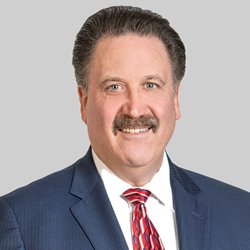
Ronald J. Eagar
When planning the succession of your construction company, one of the first questions to ask is ‘How do I envision the company after my ownership exit? If your goal is keeping the company intact — and possibly retaining your leadership position — relinquishing control to a third party is not an option.
Owners with this vision may find an Employee Stock Option Plan (ESOP) an attractive choice. An ESOP is a type of employee benefit plan in which ownership of the company is sold to the employees. The ownership is held in a trust on behalf of the employees, and the trust typically borrows money from a financial institution or the owners to complete the purchase.
Shares are allocated to employees as the loans are paid off. Similar to a pension, the terms of vesting are customizable but usually based on annual compensation. Generally, all vested full-time, non-union employees are eligible.
Benefits of an ESOP
Benefits of an ESOP for owners means they can retain leadership positions and be an integral part of the company’s future, although they cannot participate in the ESOP themselves. Taxation of the gain can be deferred under Section 1042 of the IRS code. Owners can also benefit from “synthetic equity,” which grants them a percentage of the business if it gets sold or goes public in the future.
Employees benefit from the low risk associated with ESOPs. Because no personal funds are used to make the purchase, they can never lose more than they put in. They are not taxed on any company contributions made to the ESOP until they withdraw the value of their shares upon leaving the organization, and even then, they can roll the funds into another retirement plan to continue the tax deferral.
The ESOP can be structured as a tax exempt entity, which is advantageous in bidding work, and ultimately in paying back debt. Employee retention is another plus. Having a financial interest in the company is a proven motivator for employees to stay long-term and engage in its success.
ESOP Considerations
Even with these advantages, ESOPs are not the right option for everyone. Corporate culture is a big consideration. ESOPs are best for companies run like true businesses, where matters are well-documented and handled at arm’s length. A family business, where this may not the case, would have to adjust to becoming responsible to the ESOP/trustee and annual reporting requirements.
Existing debt and financing options should be considered. Most ESOPs take on some debt to cover the purchase, and bank financing needs to be secured. The ESOP must be able to meet bank or surety covenants that were entered into before the sale.
There are many upfront and ongoing expenses as well. You will need to hire many more professionals than in a traditional sale, including an ESOP consultant, attorneys, a valuation professional, a third-party administrator (TPA) and a trustee to represent the employees.
If the ESOP has more than 100 participants, it will require an annual audit on top of the company’s general audit and 401(k) audit. There is also the need for a TPA to administer the plan benefits and for a Form 5500 to be filed annually.
Mitigating Risks
Although an ESOP involves considerable upfront expenses, which are tax-deductible, you can mitigate risk by selecting the right advisors to guide you from the start. During the negotiation process, your CPA can help you determine the purchase price, negotiate interest rates, determine repayment terms and advise on other deal details and strategies to minimize risk.
For the right owners, employees and companies, ESOPs are a powerful tool to satisfy the interests of everyone involved. But like any well-planned exit strategy, it takes ample time and communication with your advisors to plan a seamless transition and make any necessary adjustments along the way.
